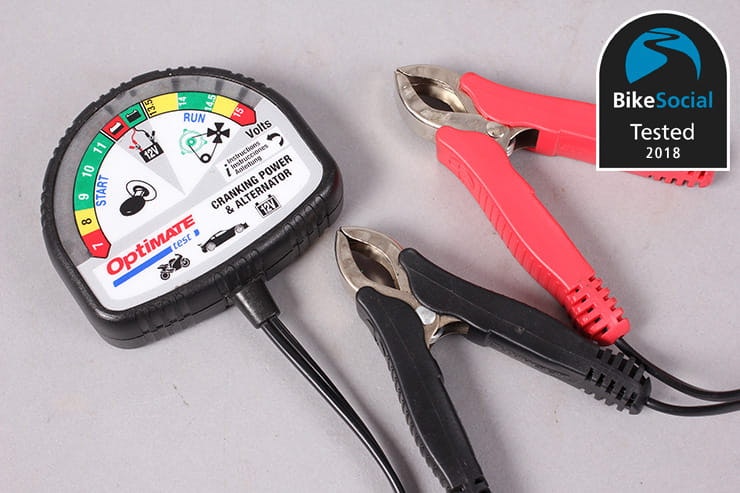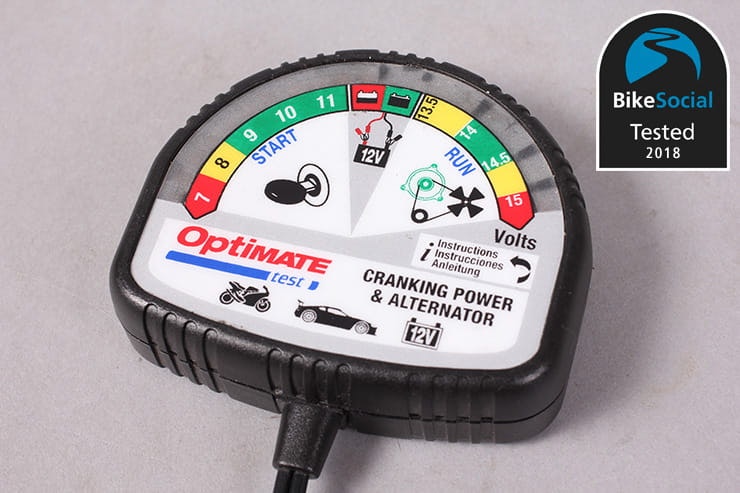Tested: Optimate Test TS-120 battery tester review
By John Milbank
Consumer Editor of Bennetts BikeSocial
19.03.2018
Date reviewed: March 2018 | Tested by: John Milbank| Price: £42.99 | www.motohaus.com
Poor starting on a bike or car can be frustrating to diagnose – has the battery had it, or is your charging circuit at fault? Over-charging due to a faulty regulator/rectifier can also be damaging to a lead-acid battery, and extremely bad for lithium chemistries. I’ve had this Optimate Test TS-120 portable battery tester for around four years now, and it’s saved me a lot of time, hassle and money…
Features
Checks battery voltage
Checks cranking capacity
Checks alternator output
Small and pocketable
Very simple to use
Doesn’t require power besides the battery it’s testing
Instructions printed on rear for ease of use
Connections
A short lead from the TS-120 terminates at a standard SAE connector – the same as used on Optimate, Battery Tender and other chargers; if you have an SAE fly-lead attached to your bike’s battery already, you can simply plug this in.
Also supplied is a pair of crocodile clips on the end of 80cm of cable, with another SAE plug to connect to the device – as long as you can get to the battery’s terminals, you’ll be able to check it, and the cable’s just long enough to rest the unit on the windscreen of most cars when you test them; watch the LEDs from inside as you start the engine and you’ll know if the charging circuit is working correctly.
Versatility
The TS-120 will check the battery and charging circuit of any bike, car, boat etc. It can be used with lithium batteries, but a lithium-specific TS-126 has a gauge calibrated to suit the finer tolerances and higher discharged voltage of these batteries.
Performance
As soon as you connect the battery, its voltage is shown as being either healthy or not. When you turn the engine over, the light moves to the left to show the voltage as the starter motor turns – down to 9V is considered healthy, but below that and your battery may be starting to lose its capacity. Once the engine’s fired up, a second LED illuminates on the right to show the charging voltage – between 14 and 14.5V is good.
My KTM 1050 Adventure has an SAE fly lead on the battery that I fitted for charging, so checking the system is very quick and easy. On my long-term-test Suzuki GSX-S750, I need to unbolt the seat to get to the battery and use the crocodile clips.
Verdict
If your bike or car is struggling to start, this device will help you work out if the fault is with the battery or the charging circuit. You can of course also do this with a voltmeter, but the Optimate is extremely convenient and easy to understand.
The TS-120 can potentially pay for itself very easily – take it with you whenever you look at buying a bike or car, and you could avoid costly problems with the charging circuit, or use the knowledge as a bartering point.
Optimate Test TS-120 battery tester
A quick look at a test of a bike’s battery and charging circuit, using the Optimate TS-120

